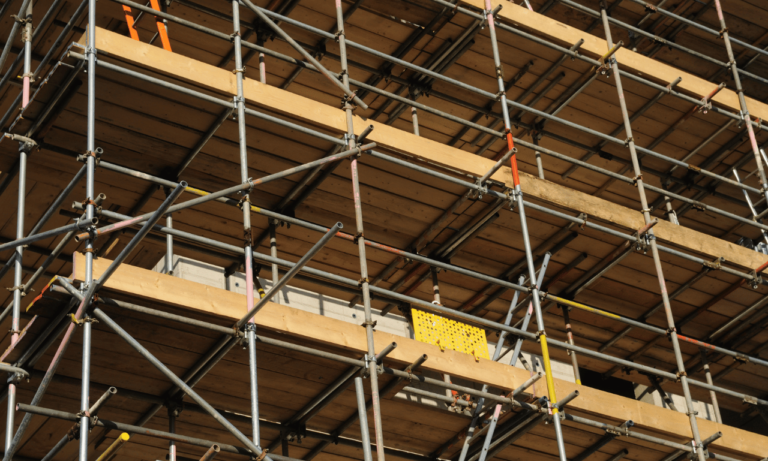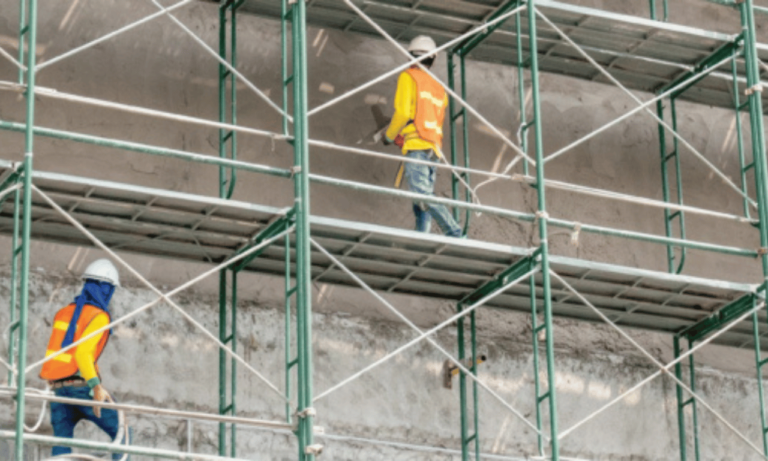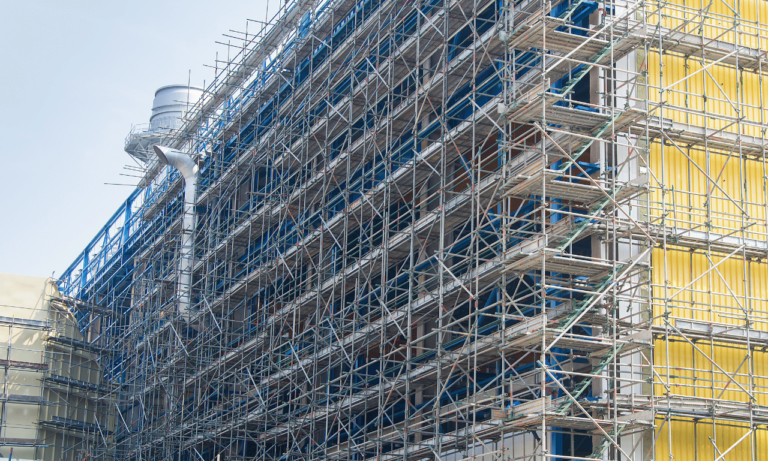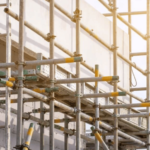Phone:
(+65)8319-0742
Every year, an alarming number of injuries occur due to accidents on climbing scaffolds, highlighting a critical need for stringent climbing scaffolding safety precautions. As workers navigate the complexities of scaffold climbing techniques, adherence to OSHA guidelines for climbing scaffolding becomes not just regulatory, but a fundamental necessity for on-site safety. Climbing scaffold training plays an essential role in equipping workers with the knowledge to prevent incidents that can lead to serious injuries and substantial financial losses.
Key Takeaways
- Implementing rigorous climbing scaffolding safety precautions significantly reduces workplace injuries.
- Proper scaffold climbing techniques are integral to maintaining a safe work environment.
- OSHA guidelines for climbing scaffolding provide a framework for safety standards that must be closely followed.
- Climbing scaffold training is essential to ensure workers are aware of the risks and preventive measures.
- Compliance with safety measures can result in fewer lost workdays and lower financial burdens from accidents.
- Personal protective equipment (PPE) is a cornerstone of safety for workers on climbing scaffolds.
Understanding the Risks of Scaffold Climbing Techniques
As the construction industry strives for safer work environments, mastering safe climbing scaffolds practices has become crucial. Despite advancements, scaffolding-related incidents remain a concern, with scaffolding accident risks carrying dire consequences both in human and financial terms. Recognizing these potential hazards requires attention to both technique and equipment.
Injury and Financial Impact of Scaffolding Accidents
Scaffolding accidents not only pose significant threats to worker safety but also impose a heavy financial burden on companies. From small mishaps to severe injuries, each incident can lead to loss of productivity, increased insurance rates, and hefty fines. Tools such as tool tethering lanyards and personal protective equipment (PPE) play a significant role in mitigating these risks and keeping work environments secure.
Importance of Personal Protective Equipment (PPE)
A cornerstone of scaffold safety is the use of adequate PPE. The essential climbing gear for scaffolding must include head protection, safety harnesses, and adequate footwear. Specifically, PPE like slip-resistant gloves offer added grip stability, critical in preventing hand-slip incidents that could result in falls or dropped objects from heights.
Tool Tethering and Non-Slip Footgear for Enhanced Safety
Effective scaffold climbing techniques involve more than just the climber’s skill. They include the gear that climbers use to maintain safety. Tool tethering lanyards are a prime example, as they secure tools to the worker’s person, diminishing the risk of accidental drops from the scaffolding. Meanwhile, footgear equipped with slip-resistant soles ensures stability when maneuvering across the scaffold’s structure.
| Tool Safety Feature | Benefits | Recommended Use |
|---|---|---|
| Tool Tethering Lanyards | Prevents tool drops, protecting workers below | For all tools used at height |
| Slip-Resistant Gloves | Enhances grip, reduces hand fatigue | Mandatory for scaffold assembly and material handling |
| Slip-Resistant Footgear | Prevents slips, supports stable movement | Essential for all scaffolding work |
Climbing Scaffolding: Adhering to Load Limits and Design Specifications

When dealing with the complexities of scaffold structure load capacity, it’s imperative to recognize that each scaffold configuration is engineered to support a predetermined maximum weight. This encompasses not only the weight of workers but also their equipment and materials. Surpassing this threshold not only jeopardizes the structural integrity of the scaffolding but also significantly increases the risk of catastrophic failures.
The load-bearing capacities of scaffolding are meticulously calculated by engineers to ensure safety on construction sites. It is a well-known industry standard that scaffolding components should possess a 4 to 1 safety factor which acts as a buffer to enhance the overall stability and reliability of the scaffold under various loads and conditions. Failure to adhere to these standards can result in severe repercussions, including potential injuries and the cessation of the entire project.
A thorough understanding of scaffolding design specifications is not only a safety measure but a legal requirement as well. These specifications detail every aspect of the scaffold’s construction, including but not limited to weight limits, tie-off points, guardrails, and the quality of materials to be used. To this end, project managers and workers must be conversant with these details to ensure every scaffold erected meets or exceeds these rigorous standards.
- Always verify the scaffold’s load capacity before use.
- Ensure all materials used meet specified design standards.
- Regularly inspect scaffolds for compliance with the design specifications.
- Train all personnel in recognizing and respecting load limits.
Adherence to these specifications guarantees not only the safety of workers but also the seamless continuation of construction operations, thereby mitigating the risk of costly project delays or legal liabilities. Ultimately, respecting the scaffold’s load specifications underpins a safe and productive workplace.
OSHA Guidelines and Training for Safe Climbing Scaffolds
Navigating through the complex landscape of scaffolding safety, both veteran construction professionals and new personnel alike must adhere to stringent OSHA guidelines climbing scaffolding. These rules serve as the national benchmark, even as industry-specific scaffolding regulations may introduce additional precautions tailored to unique industry needs.
Industry-Specific Scaffolding Regulations
While the broader principles of scaffolding safety are broadly applicable, industries such as maritime, construction, and petrochemical may have specific nuances in their safety codes. The industry-specific scaffolding regulations outline tailored requirements which work hand-in-hand with OSHA’s overarching framework to bolster the integrity of scaffolding structures across different sectors.
The Role of Competent Person in Scaffold Safety
A linchpin in the scaffolding safety protocol is the need for a Competent Person. This designation is given to an individual with robust OSHA-approved training â someone equipped with the knowledge to identify hazards and the authority to take corrective action. This Competent Person inspection requirement ensures that every step, from scaffold design to dismantling, signifies a commitment to unsurpassed safety standards.
Regular Inspections to Ensure Structural Integrity
To cement the assurance of safety, daily scaffold inspections are imperative. Conducted by a Competent Person, these thorough assessments utilize scaffolding safety check-lists at the commencement of each workday. This ritualistic scrutiny is not mere protocol but a cornerstone in preserving the integrity of scaffolding â ensuring it remains a bastion of safety amidst the rigors of construction activity.
Whether perched upon urban high-rises or spanned across broad industrial complexes, scaffolds are the arteries of the construction world. Strict adherence to these guidelines not only fortifies the scaffold’s structure but also reaffirms an industry-wide dedication to the well-being of its workforce.
Best Practices for Erecting and Maintaining Climbing Scaffolding

Establishing a secure workspace starts with safe scaffold erection and extends to meticulous maintenance. When the proper scaffolding construction practices are implemented, it serves to create an environment conducive to safety and efficiency. These best practices are essential in ensuring that workers are well-protected, and that the structure they depend on is both stable and reliable.
Erection Guidelines to Prevent Accidents
In the realm of proper scaffolding construction, adherence to the manufacturer’s guidelines is paramount. The integration of correct bracing, use of appropriate fasteners and anchors, and the supervision by a Competent Builder Person, are cornerstones in preventing construction-related accidents. These measures ensure that each stage of the scaffold building process is carried out with safety as an overriding priority, mitigating risks inherent to working at heights.
Maintaining a Safe Distance from Electrical Hazards
Understanding and ensuring electrical safety around scaffolds is another critical aspect of construction security. By maintaining at least a 10-foot clearance from power lines or undertaking additional measures such as de-energizing or insulation, workers can evade the potential hazards posed by proximity to electricity. These precautions are key in avoiding power line dangers which are a significant risk during scaffold erection and maintenance activities.
The Significance of Proper Ground Surfaces and Barrier Setup
To further fortify scaffold safety, establishing a stable ground surface for scaffolding is crucial. Whether on level terrain or slopes, choosing the right components can make all the difference in maintaining a safe platform. Moreover, the strategic placement of heavy equipment barriers ensures that the scaffold is defended against vehicular incidents, enhancing overall safety for the workers and equipment.
| Best Practice | Benefit | Associated Risk Without Practice |
|---|---|---|
| Adherence to manufacturer’s guidelines | Prevention of structural failures | Scaffold collapse due to incorrect assembly |
| Minimum 10-foot clearance from power lines | Protection from electrocution | Electrical hazards resulting in injury or fatality |
| Use of level ground or appropriate components for sloped terrain | Ensures structural stability | Lateral movement or tipping of scaffold |
| Installation of heavy equipment barriers | No interruption from vehicular encroachment | Impact risks from mobile machinery |
Essential Climbing Gear for Scaffolding Work

Adopting best practices for climbing scaffolding encompasses the use of specialized climbing gear to ensure safety and efficiency. Emphasizing the significance of every piece of equipment is crucial for mastering climbing scaffold movements. From guardrails to secured planking, each element plays a vital role in the stability and security of the scaffold structure.
Understanding the functional importance and the correct usage of each gear enhances the worker’s ability to perform tasks without compromising on safety. The following table outlines the key components of essential climbing gear that align with safety protocols and facilitate ease of movement for the worker.
| Gear | Description | Functionality |
|---|---|---|
| Guardrails | Sturdy barriers installed around the perimeter of the scaffold. | Prevents falls and provides stability for the scaffold climbers. |
| Secured Wood Planks | Wooden boards that form the working platform, securely fastened in place. | Offers a stable base that supports workers and materials, essential for secure footing. |
| GFCIs for Electrical Tools | Ground Fault Circuit Interrupters used with electrical equipment. | Protects users from electric shock, ensuring electrical safety during scaffold operations. |
| Damaged Part Inspection | Comprehensive evaluation of scaffold components for wear or damage. | Identifies compromised parts that need replacement, thus preserving the structural integrity. |
Adherence to these best practices for climbing scaffolding is not only a matter of regulatory compliance but also a cornerstone of fostering a culture of safety within the construction industry. Through diligent inspection, proper gear usage, and inherent respect for safety guidelines, workers can become adept at mastering climbing scaffold movements without sacrificing their well-being.
Conclusion
In summing up the critical aspects of this discussion, it is clear that the mastery of scaffold climbing techniques is not merely about agility or strength; it is foremost an exercise in vigilance and adherence to established climbing scaffolding safety precautions. The statistics paint a sobering picture of the risks involved, but they also underscore the value of being well-versed in the best practices for climbing scaffolding. By engaging these practices, workers and supervisors can create an environment where safety and efficiency coexist, drastically reducing the likelihood of accidents and injuries on construction sites.
As we’ve explored, every step taken towards safe scaffold useâfrom the thoughtful design and steadfast adherence to load limits, to the diligent wearing of PPE, and the rigorous training as per OSHA guidelinesâserves as an investment in the well-being of the workforce. Moreover, these steps are equally an investment in the financial health of construction endeavors, protecting against the potentially severe economic impacts of work-related incidents.
Ultimately, integrating scaffold safety into the corporate culture and daily practice does more than just comply with regulatory measures; it cultivates a mindset of proactive safety and responsibility that benefits all stakeholders involved in scaffold construction and usage. It is the insistence on routine inspections, the commitment to thorough training, and the unwavering application of safe work practices that will continue to safeguard lives and sustain the integrity of the construction industry well into the future.
FAQ
What are the key climbing scaffolding safety precautions?
Key safety precautions include wearing personal protective equipment such as hard hats and non-slip footgear, following OSHA guidelines for climbing scaffolds, using fall arrest systems, and ensuring that those involved in scaffold climbing receive proper training on scaffold climbing techniques.
How significant is the injury and financial impact of scaffolding accidents?
Scaffolding accidents are significant as they result in approximately 4,500 injuries annually, leading to financial losses from missed workdays estimated at $90 million, in addition to potential fines and increased insurance expenses.
Why is Personal Protective Equipment (PPE) essential for climbing scaffolding?
PPE is essential for protecting workers from falling objects, preventing slips, and falls from heights, and minimizing the risk of injury or death. Critical PPE for climbing scaffolding includes hard hats, non-slip footgear, and properly utilized fall arrest systems.
How do tool tethering and non-slip footgear enhance safety?
Tool tethering lanyards secure tools to the workers, preventing them from dropping, which can lead to serious injuries. Non-slip footgear provides stability and helps prevent falls from the scaffold, both of which are crucial scaffold climbing techniques for maintaining a safe work environment.
Why is it important to adhere to scaffold structure load capacity and design specifications?
Adhering to the load-bearing capacities and design specifications ensures that the scaffolding remains stable and prevents platform failures. Exceeding load limits or ignoring design specifications can lead to dangerous collapses, putting worker safety at risk.
What are the industry-specific scaffolding regulations beyond Federal OSHA guidelines?
Each industry may have additional scaffolding regulations that address unique risks and safety concerns related to that specific field. These regulations complement federal OSHA guidelines and must be observed to ensure the construction of safe scaffold platforms.
What is the role of a Competent Person in scaffold safety?
A Competent Person is someone with OSHA-approved training and authority to oversee scaffold erection and dismantlement. They are responsible for ensuring adherence to safety standards and regulations and for conducting scaffold inspections to ensure structural integrity.
How often should regular inspections be conducted on scaffolds?
Regular inspections by a Competent Person should occur at the start of each workday to ensure that the scaffolding is free from hazards. Tools like scaffolding safety check-lists are utilized to maintain structural integrity and worker safety.
What guidelines should be followed to prevent accidents during scaffold erection?
To prevent accidents during scaffold erection, it is important to adhere to manufacturer instructions, use the correct bracing, fasteners, anchors, and ensure that erection is supervised by a Competent Person to create a safe and stable structure to work on.
How can a safe distance from electrical hazards be maintained?
Ensure a minimum of 10 feet clearance from power lines or take necessary precautions like de-energizing the lines or having them insulated to eliminate hazards.
Why is it important to consider proper ground surfaces and barrier setups?
A level ground surface is essential for the stability of scaffolding. On sloped terrain, appropriate components must be used for safety. Additionally, establishing barriers can protect scaffolding from collisions with vehicles and heavy equipment.
What essential climbing gear is needed for safe scaffolding work?
Essential gear includes guardrails, properly secured wood planks, Ground Fault Circuit Interrupter (GFCI) devices for electrical tools, and a rigorous inspection process to avoid using damaged parts. These are all in line with best practices for climbing scaffolds and mastering scaffold movements.

Specialized Formwork Scaffolding Solutions
In a world where urban landscapes are constantly evolving, specialized formwork scaffolding serves as…

Multidirectional Scaffolding: Versatile Solutions
The tangible evolution of construction solutions is exemplified by multidirectional scaffolding, a culmination…

Scaffolding Supplies: Quality Equipment for Your Project
For construction projects, having the right scaffolding supplies is key for safety and efficiency. ScaffoldMart…

Essential Roof Edge Protection Scaffolding Guide
Addressing the pressing need for construction site safety, Roof Edge Protection Scaffolding emerges as…

Falsework Systems: Essentials for Construction
The integrity of a completed structure is often attributed to the visible components that one admires…
No posts found

















